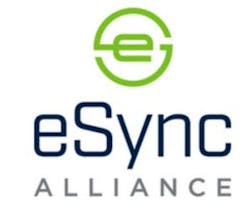As more automakers plan for using over-the-air (OTA) software updates to improve vehicle performance and reduce the time and cost required to implement these updates at dealerships, concerns have risen about security and safety. In addition, the number of different components from different manufacturers has increased exponentially.
The use of software OTA updates is projected to grow at a CAGR of 18.2 percent from 2017, reaching $3.89 billion by 2022, according to RNR Market Research, 2017. These updates will play an important role when it comes to safety, cybersecurity and recalls.
“The average cost to recall a car to update the software is $250 to $300 per car,” says Mark Singer, Excelfore’s director of marketing. “If you are doing that over the air, there’s no reason it should cost more than a few dollars. The potential savings are tremendous.”
Remote software updates are common for computers, and are increasingly a part of the Internet of Things (IoT) model of connected devices like refrigerators or smart home systems. “But a car isn’t a thing,” Singer says. “It’s a collection of things. The navigation system is one thing, the ABS controller is another thing. You have to reach those components, not just the vehicle. Those systems come in a huge variety and from a wide number of vendors.”
The company’s eSync vehicle-to-cloud systems is designed to deliver OTA software updates across multiple vehicle components, as well as diagnostic and telematics capabilities. According to the company, its “adaptive delta” technology provides a way to deliver these updates faster to every component in the vehicle using less bandwidth. Critically, it also establishes a security layer to prevent the update connection from being exploited by hackers.
Vehicles contain hundreds of software-based sensors and controllers, and each of those require software updates over time to improve features, update security patches, and reduce recalls.
Esync has three components: A server that lives in the cloud, a client installation that could be installed in the head unit or telematics unit, and an agent software written to each device. The client receives updates from the server, and distributes them to each device with an agent.
Last year, the company first announced its eSync Alliance initiative to bring together automotive suppliers and eSync-compliant solution providers to standardize vehicle OTA approaches, in addition to diagnostic and telematics data management.
“What we have done is taken the most critical IP from the eSync construct and put it into an IP pool,” Singer says. “The notion here is to build an industry-wide platform where each participant can create their own eSync-compliant devices and services, so that they don’t require a proprietary solution to move forward with these capabilities.”
“The automotive industry has a history of multi-vendor initiatives which often drive the emergence of de facto standards,” says Greg Basich, associate director for automotive service at market research firm Strategy Analytics. “OEMs are actively looking for ways to facilitate the integration of devices from multiple vendors for their connected car solutions.”
Earlier this year, the Alliance named Rick Kreifeldt as its executive director. Kreifeldt is also founder and president of Motoforza, a consultancy that specializes in connected car and infotainment projects, and previously worked at infotainment and audio system supplier Harman.
“By bringing all the eco-system partners together, the Alliance will deliver a more complete end-to-end OTA solution and can thus build something much more comprehensive than any individual company could on their own,” Kreifeldt says. “Bringing the automotive industry together on a common platform is a tough challenge, but as other similar projects have shown, the potential benefits of such cooperation are substantial and industry-changing.”
Alliance members can brand their solutions as eSync Compliant if they meet the program requirements, which include conformance to APIs and specific features. This ensures a common OTA data path for all of the different electronic devices in the car, as well as a way to pull diagnostic data from the devices.
So far, members include Molex, Wipro, HELLA, the ZF Group, and Alpine. HELLA was the most recent addition, and appeared with Excelfore at CES 2018 in Las Vegas, demonstrating how the solution could push diagnostic software to HELLA body control modules and extract data. The solution was also able to install new features into the company’s advanced high definition headlamp systems.
At the show, Excelfore and ZF also demonstrated how the eSync platform could be used to send OTA updates to a variety of different vehicles in a single fleet. In the demonstration, operators could review and improve the performance of particular vehicle models within a fleet, and then use the same OTA process for predicting and resolving potential security issues.
Tesla is so far the only OEM that has fully embraced the OTA concept. Tesla owners, in fact, benefit from performance enhancements delivered via these updates. Tesla plans to open-source its security software, providing it for free to other automakers, according to an announcement from CEO Elon Musk in August.
Automakers spend a bundle to bring cars in for simple software/firmware updates that could otherwise be handled remotely. However, in the U.S. many vehicles aren’t able to receive these updates for some systems because of automaker agreements with dealerships; in other cases, they have restricted the use of OTA updates because of concerns about safety or security. GM plans to introduce OTA updates in 2020. Last year, Ford announced it would wirelessly provide Android Auto and Apple CarPlay to its Sync 3-equipped 2016 vehicles using OTA technology.


